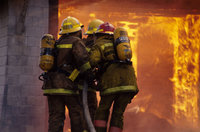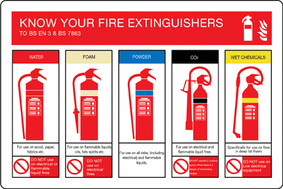 Fire safety is an issue that no firm can afford to ignore. If you let risk management standards slip when it comes to this issue, the consequences could be disastrous for your personnel, premises, finances and reputation. The fact is, the majority of blazes are preventable, as long as you adopt the right procedures and controls. To help ensure you’re able to keep danger levels to a minimum, here is a brief guide to fire safety in the workplace. Ensure your personnel are in the know Effective manager and worker training is a crucial aspect of fire safety. As an employer, you must make sure that your personnel know how to reduce risks and what to do in the event of an emergency. As well as in-house training, you can sign your staff up to courses run by expert third-party providers. It is intended for managers, supervisors and employee representatives and it aims to enable people to boost fire safety in accordance with international best practice. Conduct risk assessments Another of your major responsibilities is to conduct fire safety risk assessments, and to keep these documents up to date. These analyses can be incorporated into broader risk assessments or conducted as a separate exercise. However you structure your assessments, they will need to identify potential cases of fire, substances that burn and any people who may be at risk if a blaze broke out at your premises. As well as highlighting the dangers, you will need to determine appropriate actions to avoid them or, if this is not possible, at least control them. For example, your assessment may identify the need to keep flammable substances and sources of ignition apart, and to avoid accidental blazes caused by incidents like heaters being knocked over. The importance of good housekeeping should also feature in your assessment. This may include the importance of avoiding the build-up of rubbish that could be a fire risk. In addition, you will need to specify what you will do to protect people if there is a fire. This will include fire detection and warning systems, the equipment needed to fight blazes effectively and making sure escape routes and fire exits are well marked and kept clear at all times. Meanwhile, don’t simply shelve your assessment once it is complete. You will need to review and update it on a regular basis in order to ensure that it reflects all of the risks within your workplace. Seek guidance if necessary If you’re not sure about anything connected to fire safety, make sure you seek suitable guidance. There is plenty of information available on our website, if you don’t have the time or confidence needed to deal with these issues yourself, you can bring in safety consultants to make sure you fulfill your obligations. This can give you added peace of mind. As long as you take the risk of fire seriously and follow advice like this, you should be able to protect your employees and your business from this danger. Call us on 79784078 or email on [email protected] for further details.
15 Comments
 For larger premises, such as a car dealership that has a showroom, office, workshop, store and flammable storage, you need to break this down and consider each area on its own. However, it is best not to have too many different types on the same premises if possible as this adds to confusion in a panic. So, if you have foam in the workshop, use a foam fire extinguisher as the water-based one in the office area. Should your premises have multiple risks such as a garage workshop, a powder fire extinguisher may be better as your fire may include wood, paper, paint and fuel all at the same time. In a garage workshop we would recommend powder for general use and CO2 for small welding fires but the office area would still need water-based ones as powder will make a mess. In an office, hotel or nursing home, powder would make a dust cloud that may stop people from finding exits. A commercial kitchen should have a combination of fire blankets, wet chemical extinguishers for any deep fat dryers, plus C02 for electrical fires. An office would have the same risks as most shops, salons, hotels, residential homes, shopping centers, etc. so the requirements would be a water additive extinguisher with a CO2 at each fire point. Construction sites would have multiple risks so powder and CO2 would be a good option. Don’t forget a fire extinguisher in company vehicles – every vehicle should have a 2kg powder extinguisher in the driving area, and larger vehicles carrying dangerous goods require further fire extinguisher provision. Another consideration is the temperature. So, if they are stored outside on a petrol station forecourt or building site, powder would be best as it can be used down to minus 30 degrees. Foam and water would beat antifreeze but this reduces the fire-fighting ability and, by the time an engineer visits, discharges and refills with antifreeze, will probably cost more than you paid to buy a new extinguisher! |
Archives
November 2019
Categories
|
Proudly powered by Weebly

 RSS Feed
RSS Feed